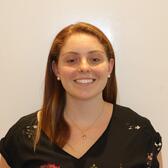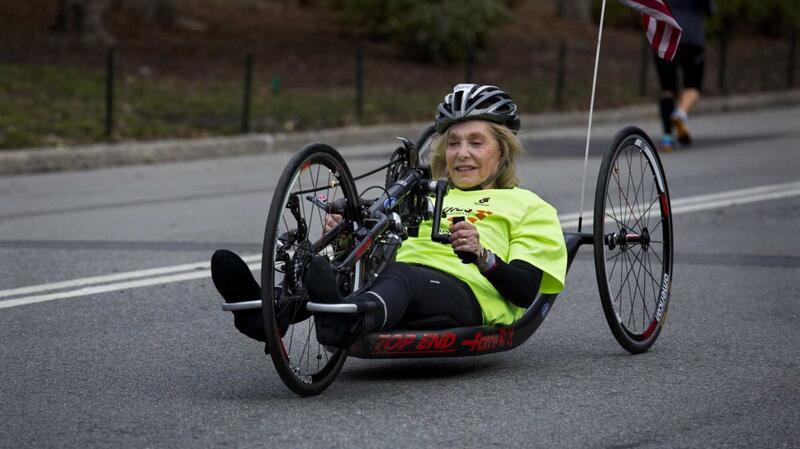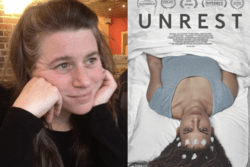This Year, Resolve to Be More like This Badass Woman
I met Helene Hines when my mother dragged me, mildly against my will, to a spin class at our local gym on Long Island. I pushed against the idea because I knew I would be the youngest one in the class— the instructor is an 80-year-old cyclist who reliably kicks his students’ asses—and I was about to get sweated out by someone more than three times my age. Little did I know that another member of the class was about to humble me, too—not only with her age and athleticism, but with her incredible life story.
It’s impressive enough on its own that Helene Hines participates in a high-intensity spin class three times a week at the age of 72. It’s even more impressive is that she does this while dealing with Multiple Sclerosis (MS), a disease that often leaves people disabled or paralyzed. Oh, and Helene has run 27 marathons, continues to compete and win in the handcycling division, has jogged with Bill Clinton, and holds two keys to New York City!
Helene started experiencing symptoms of MS at just 30 years old. It started with neck pain. Soon after that, she couldn’t move her racket while playing tennis one day. And then one morning, Helene found herself on the phone with her husband saying, “I can’t move.”
It took countless doctor’s visits and a lot of self-advocacy and persistence to get an accurate diagnosis and come up with a treatment plan that worked. At the time, MS wasn’t well understood, and there were few effective treatments.
In the time it took to be diagnosed, Helene’s leg muscles became very weak. But even so, she refused to use a wheelchair, preferring to crawl in the hopes of avoiding muscle atrophy. She never wanted to give up her independence. Even at a time of frustration, pain, and confusion, Helene maintained her resolve. After many dead-end tests and treatments, Helene learned about stim treatments, in which small electrodes are placed on the skin and used to electrically stimulate muscles. Helene was able to get the treatment, and it worked. She slowly regained her strength, starting with short walks on the Long Beach boardwalk, which became short jogs, which became one-mile runs, which became 5ks. And thus, Helene’s passion for running was born.
Helene soon learned of the Achilles Track Club, a group for runners with physical disabilities. For Helene, Achilles became a community to train with, learn from, and advocate for. She was inspired by the long-distance racers in the club and learned about services like volunteer runners, who run alongside racers with disabilities to help them and cheer them on.
In 1990, 12 years after starting stim treatment, Helene signed up for her first marathon. Though the longest distance she had run before race day was 12 miles, Helene finished the entire 26 miles of the Long Island Marathon that day with the best time for a woman with a disability.
Although her first marathon was grueling and took a toll on her body, this was only the beginning of Helene’s love for distance racing. Next came the New York City Marathon, then the Boston Marathon, then the New York City Ultra Race, a whopping 37 miles in Central Park. Helene has also raced internationally, most notably at the Comrades Race in South Africa, a 56- mile run through Zululand. To be eligible, you have to run a marathon in four and a half hours or less. Helene was the first person with a disability to run the race. She was celebrated by the press and was invited to run with President Bill Clinton in celebration of the American with Disabilities Act.
Between 1990 and 1998, Helene ran 27 marathons. The 1998 New York City Marathon turned out to be her last. She developed dizziness and nausea while running, an issue that persisted no matter how short the distance she ran.
Instead of quietly retreating, Helene did what she’d learned to do best— she persevered and adapted. She learned about handcycling, a sport that uses a hand-cranked chair that looks like a cross between a wheelchair and a bike. In the early 2000s, handcycling in long-distance running races was a bit controversial; people questioned whether it belonged in the wheelchair division or warranted a division of its own. Still, it offered a way for people with disabilities to race, and Helene was at the forefront. More often than not, Helene won the handcycling division of the marathons she entered— at first the women’s division, and eventually, the entire race.
As she discovered the benefits of handcycling, she encouraged others with MS to try it, even arranging for donated handcycles and teaching peers how to ride. Helene was also a pioneer in aquatic exercise for people with disabilities. Through experience, she’d found that water aerobics offered a way for those with MS, who often struggle with balance on land, to do resistance training. Inspired, Helene organized and led local groups of people with MS in aquatic exercises twice a week.
As I hope is clear by now, Helene is incredible. Luckily, she has gotten some much-deserved recognition for her accomplishments. In 2003, for example, she was the first person with disabilities to be inducted into the National Jewish Sports Hall of Fame and Museum.
But beyond her trophies and awards, what I find most inspiring about Helene is her determination and her impact on others. Whenever she heard ‘no’— doctors telling her to expect paralysis or trainers telling her to slow down —she pushed back and proved everyone wrong. And she’s encouraged others to show the same grit as they pursue their goals.
Nowadays, you can find Helene on Long Island, living with her husband George, her beloved service dog MJ, and her daughter Jennifer. She stays busy attending spin classes and personal training sessions, continuing to hand-cycle in marathons and inspire those around her.
As we begin 2022—a year that promises to have more than its share of challenges—let’s all take a page from Helene’s playbook: no matter what the setback, with the right mindset, you, too, can cross the finish line.







